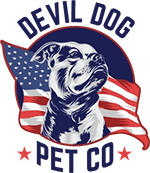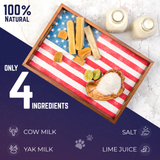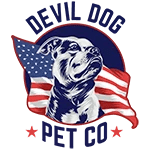Why Air-Dried Dog Food Beats Kibble: The Essential Facts
Air-dried dog food delivers superior nutrition while maintaining the convenience of kibble—without the heavy processing that strips away vital nutrients. Unlike conventional kibble that's extruded at high temperatures, air-dried dog food uses gentle dehydration that preserves proteins, enzymes, and natural flavors while eliminating harmful bacteria. It's the nutritional middle ground many owners have been searching for: the convenience of dry food with nutrient density closer to raw. For more insight into how air-drying compares to traditional kibble, see this in-depth breakdown of air-dried dog food vs. kibble.
Key Takeaways
- Air-dried dog food provides superior nutrition compared to conventional kibble.
- It uses gentle dehydration methods that preserve proteins, enzymes, and natural flavors.
- Air-dried food eliminates harmful bacteria without heavy processing.
- This type of food offers the convenience of kibble with nutrient density closer to raw diets.
Table of Contents
- Why Air-Dried Dog Food Beats Kibble: The Essential Facts
- What Exactly Is Air-Dried Dog Food?
- Nutritional Advantages Over Kibble
- Practical Benefits Beyond Nutrition
- Transitioning to Air-Dried Food
- Comparing Air-Dried Dog Food Brands
- Ingredient Quality in Air-Dried Food
- Air-Dried Dog Food for Special Needs
- Common Concerns About Air-Dried Food
- Feeding Guidelines for Air-Dried Dog Food
- Versatility of Air-Dried Dog Food
- Storage and Handling Best Practices
- Conclusion: Is Air-Dried Right for Your Dog?
I discovered this firsthand when our dog Dexter started turning his nose up at premium kibble. The change to air-dried transformed not just his enthusiasm at mealtime, but his coat, energy levels, and even his dental health within weeks. That's when I knew this wasn't just another pet food trend—it was a legitimate nutritional upgrade.
What Exactly Is Air-Dried Dog Food?

Air-dried dog food starts with raw, whole-food ingredients that undergo a slow, controlled drying process using circulating air at low temperatures (typically under 160°F). Unlike kibble manufacturing, which uses high-heat extrusion that can destroy up to 40% of available nutrients, air-drying preserves the biological integrity of proteins, fats, and enzymes while removing moisture that would otherwise lead to spoilage.
Think of it as beef jerky versus a heavily processed burger patty. One maintains its nutritional profile and natural flavor; the other loses both through intensive processing. The result is a shelf-stable food that doesn't require refrigeration but maintains significantly more of its original nutritional value. For a deeper dive into the science behind this process, check out this peer-reviewed study on air-dried pet food nutrition.
The Air-Drying Process Explained
When manufacturers create air dried dog food, they start with raw ingredients—typically meat, organs, bones, and select produce. These ingredients are prepared in small batches, then placed in specialized drying chambers where temperature-controlled air circulates continuously, gradually removing moisture without cooking the ingredients.
This process takes significantly longer than kibble production (often 48-72 hours versus 20 minutes for extruded kibble), but preserves heat-sensitive nutrients like:
- Natural enzymes that aid digestion
- Delicate omega fatty acids
- Amino acid structures
- Vitamins B and C
The finished product contains approximately 10-15% moisture (compared to kibble's 6-10%), making it more palatable while still shelf-stable without artificial preservatives.
Nutritional Advantages Over Kibble
The air-dried approach creates several distinct nutritional advantages that explain why many veterinary nutritionists now recommend it as a superior alternative to conventional dry food: see more comparisons and expert opinions in this air-dried vs. kibble guide.
Higher Protein Bioavailability
When a customer's border collie developed digestive issues, I suggested switching to air dried dog food. The difference was immediate—better digestion and more energy. This wasn't coincidence. Air-dried foods typically offer 90%+ digestibility compared to 65-75% for premium kibbles.
The gentle drying process preserves protein structures, making amino acids more bioavailable to your dog's system. Most air-dried options contain 30-50% protein by weight, versus 20-30% in premium kibbles, and that protein is more usable by your dog's body.
Minimal Processing = Maximum Nutrition
Air-dried dog food skips the destructive extrusion process that fundamentally alters ingredient structures. During kibble production, ingredients are:
- Ground into a homogeneous slurry
- Cooked at temperatures up to 400°F under high pressure
- Forced through dies that create the kibble shape
- Sprayed with fats and flavor enhancers to replace lost palatability
In contrast, air-dried food undergoes minimal transformation. Whole food ingredients remain recognizable, and the nutritional profile stays much closer to the original state. This means your dog gets food that's much closer to what nature intended—meat that's still meat, not a highly processed derivative.
No Synthetic Preservatives Needed
Most conventional kibbles rely on synthetic preservatives or heat-stable natural ones to achieve their 12-18 month shelf life. Air-dried dog food achieves stability primarily through moisture removal, allowing many brands to completely eliminate artificial preservatives, colors, and flavors.
When you examine a bag of quality air dried dog food, you'll typically find a straightforward ingredient panel with recognizable components—a stark contrast to the chemical dictionary often found on kibble bags.
Practical Benefits Beyond Nutrition
The advantages of air dried food extend beyond nutritional superiority. As a dog owner who values both convenience and optimal health, I've found several practical benefits worth highlighting:
Superior Palatability for Picky Eaters
Air-dried foods maintain more natural meat flavors and aromas that appeal to dogs' carnivorous preferences. When Dexter went through a picky phase, switching to air-dried immediately resolved his mealtime hesitation. The concentrated meat flavor and jerky-like texture triggered his natural feeding instincts.
Many owners report similar experiences—dogs that turned their noses up at premium kibbles enthusiastically devour air-dried alternatives. This makes sense from an evolutionary perspective; the scent profile more closely resembles fresh prey than highly processed kibble. If you're interested in additional ways to appeal to picky eaters, you might also explore yak cheese Himalayan dog chews as a palatable treat or supplement. And if your pup is still growing, check out our blog on choosing the best puppy food brand to ensure you're supporting healthy development right from the start.
Convenience Without Compromise
Unlike raw feeding, which requires freezer space, thawing planning, and careful handling to prevent bacterial contamination, air dried dog food offers similar nutritional benefits with kibble-like convenience:
- Shelf-stable for 12-24 months unopened
- No refrigeration required
- Lightweight and compact for travel
- No mess or prep time
- Can be served dry or rehydrated with warm water
This convenience factor makes air-dried food particularly valuable for active families, travelers, and those who appreciate the benefits of fresh food but need practical solutions. If you love to travel with your pup, don't miss these tips for taking your dog camping for more ideas on dog-friendly food options and travel essentials.
Dental Health Benefits
The texture of most air dried dog food creates a natural abrasive action that helps reduce plaque buildup. While not a replacement for dental chews or brushing, the jerky-like consistency requires more chewing than kibble, which many dogs swallow with minimal mastication.
Several customers have reported improvements in their dogs' breath odor after switching to air-dried diets—likely due to both the mechanical cleaning action and the absence of synthetic ingredients that can contribute to oral bacteria growth. For more expert advice on your pet's dental health, check out our detailed guide: tips for taking care of your dog's teeth.
Transitioning to Air-Dried Food

If you're considering making the switch to air dried dog food, a methodical transition helps prevent digestive upset. The concentrated nutrition means your dog needs less volume, which can confuse owners accustomed to kibble's bulk.
Start by replacing 25% of your dog's current food with the air-dried option for 2-3 days, then increase to 50% for another 2-3 days, followed by 75%, and finally 100%. This gradual approach gives the digestive system time to adjust to the richer nutrition profile.
Most dogs transition easily due to the high palatability, but monitor stool quality during the switch. Temporary firmer stools are common as the body adjusts to higher protein utilization and less waste production.
Serving Size Considerations
The concentrated nutrition in air dried dog food means serving sizes are substantially smaller than kibble—often 50-75% less by volume. This initially alarms some owners who worry their dog isn't getting enough food, but the density of nutrition means satisfaction comes from quality, not quantity.
Follow the feeding guidelines on your chosen brand's packaging, but be prepared to adjust based on your individual dog's metabolism, activity level, and weight goals. A kitchen scale helps ensure accurate portions during the transition period.
Comparing Air-Dried Dog Food Brands
After Dexter's transformation on air dried dog food, I tested several leading brands to find the best options for different needs. Not all air-dried foods are created equal – ingredient quality, sourcing practices, and manufacturing standards vary significantly between companies. If you're interested in exploring a variety of premium nutrition options, check our shop all products page for other healthy dog essentials.
Premium Air-Dried Options
ZIWI Peak stands as the gold standard in air dried dog food. Their recipes feature 96% meat, organs, and bone from ethical New Zealand farms. The remaining 4% consists of essential vitamins and minerals – no fillers, grains, or unnecessary additives. Their air-dried venison formula transformed a customer's allergy-prone Labrador after three failed kibble attempts.
Real Meat Company offers another excellent option with 90%+ meat content and limited ingredients. Their air-dried beef recipe contains just eight components, making it ideal for elimination diets and sensitive stomachs. Both brands command premium prices ($30-40 for a 2-lb bag), but the concentrated nutrition means you feed less.
Affordable Air-Dried Alternatives
For budget-conscious owners seeking affordable air dried dog food, brands like Front of the Pack and Open Farm provide quality options at slightly lower price points. These typically contain 70–80% animal ingredients supplemented with organic produce and fewer exotic proteins. The cost savings comes from using more common protein sources like chicken and beef dog food rather than venison or wild-caught fish.
Many owners find success mixing air-dried food with high-quality kibble to stretch their budget while still providing substantial nutritional benefits. Even a 25% air dried dog food topper significantly improves overall diet quality. For more ways to boost your dog's nutrition, see our guide to avoiding common pup parent mistakes in daily care and feeding.
Ingredient Quality in Air-Dried Food
The nutritional superiority of air dried dog food begins with ingredient selection. Leading brands prioritize whole-food ingredients that mirror what dogs would naturally consume in the wild:
Meat Content and Sourcing
Quality air dried food contains 70-96% animal ingredients, including muscle meat, organ meat, and ground bone. This reflects the natural prey ratio dogs evolved to eat. Top brands source from ethical farms practicing humane animal husbandry – free-range, grass-fed, and hormone-free.
The difference shows in the final product. When examining air dried dog food brands, look for specific named meats rather than generic "meat meal" or "animal derivatives." Premium options list identifiable sources like "New Zealand grass-fed lamb" or "free-range chicken" – transparency that indicates confidence in sourcing. For those considering chew options that mirror wild diets, our premium elk antler dog chews collection is a great supplement to a natural feeding routine.
Limited, Functional Ingredients
Beyond meat content, quality air dried dog food contains minimal plant matter – typically limited to functional ingredients that provide specific nutritional benefits rather than cheap fillers. Common additions include:
- Pumpkin and sweet potato for digestible fiber
- Kelp for natural minerals
- Green-lipped mussel for joint support
- Organic herbs for antioxidants
The best formulas contain no grains, white potatoes, legumes, artificial colors, flavors, or preservatives. This minimalist approach reduces potential allergens while maximizing nutritional density.
Air-Dried Dog Food for Special Needs

One of air dried dog food's greatest strengths is its suitability for dogs with specific health challenges or dietary requirements. The minimal processing and clean ingredient profiles make it ideal for several special cases:
Sensitive Stomachs and Allergies
Dogs with food sensitivities often thrive on air dried formulas. The limited ingredient lists make it easier to identify and avoid trigger foods, while the enhanced digestibility reduces gut inflammation. Several customers with allergy-prone dogs report dramatic improvements after switching to single-protein air dried dog food options. Learn more about first aid basics for pup parents to keep your sensitive or allergy-prone dog safer during dietary transitions.
For extreme cases, look for air dried formulas featuring novel proteins like venison, kangaroo, or rabbit that your dog hasn't previously encountered. These unique protein sources minimize the chance of allergic reactions while providing complete nutrition.
Weight Management with Air-Dried
Despite their nutrient density, air dried dog food can support healthy weight when properly portioned. The high protein content promotes lean muscle mass while supporting metabolic function. Many formulas contain minimal carbohydrates, aligning with evidence that dogs thrive on lower-carb diets.
The key lies in precise portioning – air dried food requires significantly smaller serving sizes than kibble. A digital kitchen scale becomes essential equipment for transitioning overweight dogs to this concentrated nutrition source.
Senior Dogs and Dental Issues
Air dried dog food offers particular benefits for aging canines. The enhanced digestibility reduces strain on aging digestive systems, while the concentrated nutrition ensures seniors receive adequate protein despite potentially decreased appetite.
For dogs with dental problems, most air dried foods can be quickly rehydrated with warm water to create a softer texture while maintaining nutritional integrity. This versatility makes mealtime comfortable for seniors with tooth loss or oral pain without sacrificing quality.
Common Concerns About Air-Dried Food
Despite its benefits, some dog owners hesitate to make the switch to air dried dog food. Let's address the most common concerns with evidence-based perspectives:
Cost Considerations
The sticker shock of air dried dog food gives many owners pause. At $30-45 for a 2-pound bag versus $50-60 for a 25-pound bag of premium kibble, the price difference seems dramatic. However, the serving size comparison tells a different story.
A 50-pound dog typically requires 4-5 cups of kibble daily but only 1-1.5 cups of air dried food. This concentrated feeding means a 2-pound bag often lasts 7-10 days for a medium-sized dog. When calculated as cost-per-day, many air dried options end up just 30-50% more expensive than premium kibble – a reasonable investment for significantly enhanced nutrition.
Bacterial Safety Concerns
Some owners worry about bacterial contamination in minimally processed foods. Reputable air dried dog food manufacturers address this through multiple safety measures:
- Testing raw ingredients before processing
- Maintaining strict temperature controls during drying
- Implementing HACCP food safety protocols
- Batch testing finished products before release
The air-drying process itself creates an inhospitable environment for harmful bacteria by removing moisture while preserving natural antimicrobial compounds in the raw ingredients. Most quality brands achieve a "bacteriologically clean" final product without chemical preservatives.
Feeding Guidelines for Air-Dried Dog Food
Transitioning to air dried dog food requires attention to detail. When we first introduced Dexter to this concentrated nutrition source, we made the rookie mistake of overfeeding. The serving sizes look deceptively small compared to kibble's volume, but they pack significantly more nutrition per ounce.
Proper Portioning Techniques
Most air dried dog food brands provide weight-based feeding charts, but these serve as starting points rather than gospel. A 50-pound active dog typically needs about 1-1.5 cups daily, split between two meals. Adjust portions based on your dog's metabolism, activity level, and weight goals.
Precision matters here. A digital kitchen scale gives you the most accurate measurements, especially important during the transition period. Overfeeding can lead to digestive upset and unnecessary expense, while underfeeding deprives your dog of essential nutrition.
Transition Strategies
Abrupt diet changes can trigger digestive upset even with premium foods. Implement a 7-10 day transition schedule, gradually increasing the air dried dog food while decreasing the previous diet:
- Days 1-3: 25% air dried, 75% previous food
- Days 4-6: 50% air dried, 50% previous food
- Days 7-9: 75% air dried, 25% previous food
- Day 10+: 100% air dried dog food
For dogs with particularly sensitive digestive systems, extend each phase by a few days. Adding a probiotic supplement during transition can further support gut adaptation to the more nutrient-dense food.
Versatility of Air-Dried Dog Food

One of air dried dog food's greatest advantages is its flexibility. Beyond serving as a complete diet, it functions brilliantly in multiple feeding strategies:
Topper and Mixer Applications
For owners not ready to commit fully to air dried dog food, using it as a topper offers substantial benefits. Even replacing 25% of kibble with air dried food significantly enhances the overall nutritional profile while controlling costs.
This hybrid approach works particularly well for large breed dogs where full air dried feeding might strain the budget. The improved palatability also benefits picky eaters who might refuse plain kibble but eagerly devour it when mixed with flavorful air dried morsels. If you're interested in chews and toppers for dogs of different sizes, browse our large dogs collection for suitable options.
Training Treats and Enrichment
Air dried dog food doubles as perfect high-value training treats. The intense meat flavor captures attention during training sessions, while the clean ingredient profile prevents digestive upset from treat overload. Simply break pieces into appropriate training-sized morsels.
For enrichment activities, stuff larger pieces into puzzle toys or use them as rewards in scent work. The natural preservation method maintains the food's aromatic properties, making it ideal for nose work and scent-based games. For additional treat and chew ideas, check out our article on whether antlers are a good idea for dogs and how they compare to other enrichment options.
Storage and Handling Best Practices
Proper storage extends shelf life and maintains nutritional integrity. Unlike raw food, air dried dog food requires no refrigeration before opening, making it convenient for travel and everyday use.
Maintaining Freshness
Once opened, store air dried dog food in its original packaging inside an airtight container in a cool, dry location. This double-barrier approach prevents moisture absorption while protecting against pest intrusion. Most brands remain fresh for 8-12 weeks after opening when properly stored.
For extended storage, consider vacuum-sealing portions not needed immediately. The removal of oxygen further extends shelf life while preserving nutrient integrity.
Handling Safety Protocols
While air dried dog food presents fewer bacterial concerns than raw diets, basic food safety still applies. Wash hands after handling, clean food bowls daily, and don't leave moistened food sitting out for extended periods. These simple practices prevent potential contamination issues.
For households with immunocompromised individuals, these precautions become particularly important, though the risk remains significantly lower than with raw feeding approaches.
Conclusion: Is Air-Dried Right for Your Dog?
After testing various brands and formulations, air dried dog food stands out as a balanced choice for canine nutrition. It combines the biological benefits of raw feeding with the convenience and safety modern households need. Many owners, including myself, have seen noticeable improvements—better digestion, shinier coats, steady energy, fewer allergies, and healthier teeth. While more expensive than kibble upfront, its nutrient density often means smaller portions and long-term savings on health costs.
Air dried food offers a practical middle ground between raw and highly processed diets. Whether used as a complete meal, a nutrient-rich topper, or a travel-friendly option, it supports overall health without compromising convenience. For dog owners aiming to enhance well-being through smarter nutrition, this option is well worth considering.
Download the FREE 10-Step Dog Prep Guide
Frequently Asked Questions
Is air dried food good for your dog?
Air dried dog food can be a great option because it preserves more nutrients than traditional cooking while being shelf-stable without refrigeration. It often contains high-quality ingredients with minimal processing, supporting digestion and overall health. However, quality varies between brands, so choose formulas with transparent sourcing and balanced nutrition.
Is air drying good for dogs?
Yes, air drying is a gentle preservation method that retains natural flavors and nutrients better than high-heat cooking. It reduces moisture to inhibit bacterial growth while keeping proteins and enzymes largely intact. This makes air dried food easier to digest and often more appealing to dogs compared to heavily processed kibble.
How do you make air dried dog food?
Air dried dog food is made by slowly removing moisture from fresh ingredients using controlled, low-temperature air flow over several hours or days. This process avoids cooking at high heat, preserving vitamins and enzymes. After drying, the food is packaged to keep moisture out, ensuring freshness and safety without additives.
Is air dried the same as cooked?
No, air dried food is not the same as cooked food. Cooking typically involves high temperatures that can degrade nutrients and alter ingredient structures, while air drying uses low heat and airflow to gently remove moisture. This difference means air dried food retains more of the original nutritional value and enzymes.
Do you rehydrate air dried dog food?
Rehydrating air dried dog food is optional and depends on your dog’s preference. Some dogs enjoy it dry, while others benefit from adding warm water to soften the food and release aroma, which can boost palatability and hydration. If you choose to rehydrate, feed immediately to prevent spoilage.
How much air dried food should I feed my dog?
Feeding amounts vary by your dog’s size, activity level, and the specific product’s caloric density. Always follow the manufacturer’s feeding guidelines as a starting point, then adjust based on your dog Dexter’s weight and energy needs. Monitor body condition regularly and consult your vet to fine-tune portions for optimal health.






